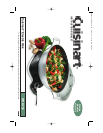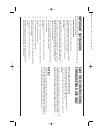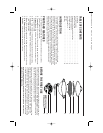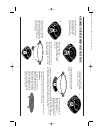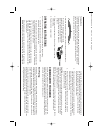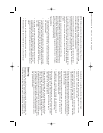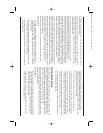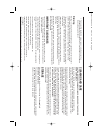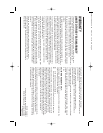
NOTE: Wooden utensils will not damage the nonstick surface of the wok.
Stir-frying is usually done in stages, as foods tend to have different cooking
times. Cooked foods can be removed from the wok and returned at a later stage
when sauces or spices are added to complete the dish.
The Cuisinart
™
Electric Wok has been treated with a nonstick coating for easy
food preparation and easy cleanup. The nonstick coating gives you the option of
stir-frying with small amounts of oil for healthier cooking.
It is very important when stir-frying to have all of your ingredients prepped before
starting to cook. Once you start, there is no time to stop and chop vegetables,
slice meats, or measure and mix sauces, or search the cabinet for an herb
or spice.
When you are ready to begin cooking, heat the wok to 375°F, or the
temperature suggested in your recipe, for about one minute before adding oil.
Add oil (peanut, canola or other vegetable oil) by drizzling it down the sides of
the wok for more even distribution – and it will heat faster this way. To test the
hotness of the oil, add a single piece of vegetable into the hot wok. If it sizzles,
then you are ready to begin cooking.
Tips and Hints:
• For even cooking, cut all ingredients into a similar size, unless your recipe
states otherwise. If you are not following a recipe, cut all your ingredients
into bite-sized pieces.
• You may season the oil before adding other ingredients, by cooking a few
pieces of garlic and/or fresh ginger for 20 to 30 seconds. Reduce the heat
to keep the garlic or ginger from burning and remove the pieces of
garlic/ginger after the oil has picked up their flavor before continuing with
your recipe.
• If the recipe calls for meat and vegetables, the meat can be cooked first
and removed before cooking the vegetables. Return it to the wok just
before adding your sauce ingredients – this will keep the meat from over-
cooking and help the meat and vegetables maintain their own individual
flavors.
• Meats are most often stir-fried using high heat to seal in juices.
• Meats/seafood cook best in smaller amounts – you may stir-fry your
meat/seafood in 1-cup batches so that it will sear and not steam.
• Remove stir-fried beef from the wok when it changes color – since the
pieces are small, it will be about 80% cooked.
• When stir-frying meats and seafood, wait a few seconds before moving
and tossing them in the wok to give them a chance to brown. Alternatively,
vegetables should be moved about immediately.
• Stir-fry times for vegetables will vary according to their density/hardness.
The densest vegetables should be added first. Denser vegetables such as
broccoli and carrots will require longer cooking times than leafy greens,
bok choy or snow peas.
• Wash vegetables ahead of time and allow them to dry before stir-frying
unless recipe indicates otherwise. Spinach may be an exception, as
cooking with a bit of water helps it wilt.
• If vegetables seem a bit dry when stir-frying, add a few drops of liquid
such as water or chicken or vegetable broth, but add it sparingly.
• When it is time to add the finishing sauce to your stir-fry, move the meats
and vegetables up on the sides of the wok to form a “well” in the center.
Add the sauce to the center of the wok and stir to thicken before
combining with the cooked ingredients.
• Keep a variety of Asian condiments in your refrigerator or pantry. Some
ingredients are used only in minimal amounts but are essential to the
flavor of the recipe – store properly according to package instructions after
opening. Some items to keep on hand include: black bean sauce,
fermented/salted black beans, chili bean paste, chili oil, dried mushrooms,
5-spice powder, hoisin sauce, soy sauce, oyster sauce, rice wine or sherry,
rice wine vinegar, nam pla (Thai fish sauce). These ingredients can be
found in Asian grocery stores, and in many well-stocked grocery stores
and “gourmet” food stores.
Steaming
Steaming food in your wok offers you a healthy method of food preparation. It is
an optimal method of cooking to retain the flavor, shape, and texture of foods.
Fewer vitamins and minerals are destroyed or leached away into the water as
6
04CU13116 WOK-730 IB 6/22/04 10:41 AM Page 6



